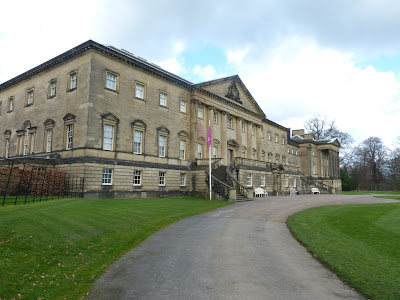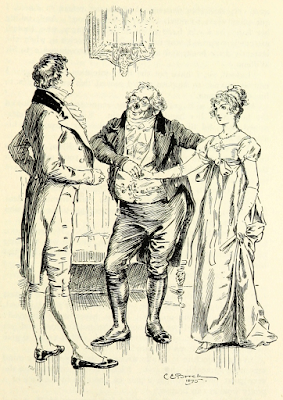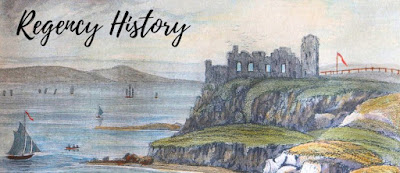 |
| Sir Walter Elliot, Bt, walking with Colonel Wallis by H Thomson (1897) From Persuasion by Jane Austen (1897 edition) |
In this post I answer the following questions:
Are baronets and knights peers?
Are the titles hereditary?
How do you address a baronet or a knight?
How do you address a baronet’s wife or a knight’s wife?
How do you address a baronet’s widow or a knight’s widow?
What is a baronetess?
Are all orders of knighthood the same?
I also highlight a mistake sometimes made by Regency romance authors.
Are baronets and knights peers?
No. Baronets and knights are titled gentlemen but not peers.
There are only five ranks in the English aristocracy: duke, marquess, earl, viscount and baron.
You can read about how to address peers here.
Baronets and knights rank below this. They are not lords and could stand as Members of Parliament in the House of Commons.
Is baronet a hereditary title?
Yes. The title of baronet is hereditary, passing down the male line in the same way that aristocratic titles do.
 |
| Sir Rowland Winn, 5th Baronet, and his wife in the library of their house, Nostell Priory (2014) |
A baronet adopts the title Sir Christian-name Surname with the abbreviation Bt or Bart after it.
For example, in Jane Austen’s Persuasion, Anne Elliot’s father is a baronet, and his full title is Sir Walter Elliot, Bt. He is always referred to as Sir Walter—never as Sir Elliot.1
How do you address a baronet’s wife?
The wife of a baronet is always referred to as Lady Surname unless she has a title of her own.
In Persuasion, Anne Elliot’s deceased mother is referred to as Lady Elliot.2
Similarly, in Mansfield Park, Sir Thomas Bertram’s wife is referred to as Lady Bertram.3
The exception to this rule is when a baronet’s wife has a title of her own.
For example, Sir William Wyndham, 3rd Baronet (c1688–1740) married Lady Catherine Seymour, a daughter of Charles Seymour, 6th Duke of Somerset. As her husband was not a peer, Lady Catherine was entitled to keep the title she held as the daughter of a duke and be called Lady Catherine Wyndham.
You can read more about married daughters of peers here.
 |
| Nostell Priory (2014) |
If a baronet dies, his widow retains the title she held as his wife unless and until the next baronet is married, in which case she becomes the Dowager Lady Surname, or Christian-name, Lady Surname, to distinguish her from the current baronet’s wife. If she has a title in her own right, she continues to use that.
If she remarries to a peer, she takes her new husband’s title.
If she remarries to a commoner, she loses her right to the title of Lady. But if she has her own title, she continues to use this eg as the daughter of an earl, she becomes Lady Christian-name New-husband’s-surname.
What is a baronetess?
A baronetess is either a woman holding the rank of baronet in her own right, or the wife or widow of a baronet.
It is extremely rare for women to hold the rank of baronet in their own right, and there were none during the Regency era. I have only been able to find a couple of contemporary uses of the term, one of which refers to Dame Mary Bolles, 1st Baronetess (1579–1662).4
 |
| Sir John Middleton and Mrs Jennings by H Thomson (1896) From Sense and Sensibility by Jane Austen (1896 edition) |
No. There are different orders of knighthood, but unlike baronetcies, none of them are hereditary.
Are all knighthoods the same?
No. In the Regency, there were various orders of knighthood.5
In order of precedence they were:
Knights of the Most Noble Order of the Garter
Knights of the Most Honourable Order of the Bath
Knights of the Most Distinguished Order of Saint Michael and Saint George
Knights Bachelor
 |
| Sir William Lucas presents Elizabeth Bennet to Mr Darcy as a desirable partner by C E Brock (1895) from Pride and Prejudice by Jane Austen (1895 edition) |
A knight bachelor is the lowest class of knight, and the most common. It is the one we come across in the novels of Jane Austen.
As with a baronet, a knight adopts the title Sir Christian-name Surname, though without the word or abbreviation for baronet after it. Sometimes the name might be written with Knight or Knt after it in formal documents.
In Jane Austen’s Pride and Prejudice, Charlotte Lucas’s father was a knight and was called Sir William Lucas:
Sir William Lucas had been formerly in trade in Meryton, where he had made a tolerable fortune, and risen to the honour of knighthood by an address to the king during his mayoralty.6
Similarly, in Sense and Sensibility, Mrs Dashwood had a relative, Sir John Middleton, who was “a gentleman of consequence and property in Devonshire.”7
For the variations for the other classes of knights, see the end of this post.
How do you address a knight’s wife?
The rules are the same as for a baronet’s wife. She is always referred to as Lady Surname unless she has a title of her own.
In the two examples above, Sir William Lucas’s wife is always referred to as Lady Lucas, and Sir John Middleton’s wife as Lady Middleton.
How do you address a knight’s widow?
The widow of a knight may continue to use the designation Lady Surname unless she remarries.
In Persuasion, Anne Elliot’s friend, Lady Russell, is the widow of Sir Henry Russell, a knight.8
If she has a title in her own right, she continues to use that.
In Pride and Prejudice, Mr Darcy’s aunt is referred to as Lady Catherine de Bourgh. Mr Collins writes:
I have been so fortunate as to be distinguished by the patronage of the Right Honourable Lady Catherine de Bourgh, widow of Sir Lewis de Bourgh.9
As Mr Collins made a lot of Lady Catherine’s patronage, and Sir Lewis de Bourgh is not described as a baronet, I assume he was a knight. On her marriage, Lady Catherine retained the use of her title as the daughter of an earl.
Although it doesn’t say this directly in the book, we can deduce this because we know that one of Lady Catherine’s nephews, Colonel Fitzwilliam, is the younger son of an earl—Lady Catherine’s brother. He must have inherited this title from his father, making Lady Catherine the daughter of an earl.
On her husband’s death, Lady Catherine continued to use her title, Lady Catherine de Bourgh.
 |
| Lady Catherine de Bourgh by C E Brock (1895) From Pride and Prejudice by Jane Austen (1895 edition) |
With the exception of Knights of the Order of the Garter, baronets rank higher than knights.
In Persuasion, Lady Russell is fully aware of this:
Lady Russell…had a cultivated mind, and was, generally speaking, rational and consistent; but she had prejudices on the side of ancestry; she had a value for rank and consequence, which blinded her a little to the faults of those who possessed them. Herself the widow of only a knight, she gave the dignity of a baronet all its due; and Sir Walter, independent of his claims as an old acquaintance, an attentive neighbour, an obliging landlord, the husband of her very dear friend, the father of Anne and her sisters, was, as being Sir Walter, in her apprehension, entitled to a great deal of compassion and consideration under his present difficulties.10
A word of warning to Regency romance authors
Titles are tricky, and it is easy to make mistakes, particularly when introducing your characters for the first time. It is tempting to give the wife of a baronet or knight as full a name as possible, with both title and Christian name.
The basic rule is don’t mix and match! If she’s got no title, she’s always Lady Surname. If she has the courtesy title of Lady from her father, she’s always Lady Christian-name Surname.
Let us take the example of Lady Bertram in Mansfield Park. She has no title of her own and so would always be referred to as Lady Bertram, never as Lady Maria Bertram. If you wanted to introduce her with her Christian name, you could say Maria, Lady Bertram.
Jane Austen’s introduction of Lady Bertram reads:
About thirty years ago Miss Maria Ward, of Huntingdon, with only seven thousand pounds, had the good luck to captivate Sir Thomas Bertram, of Mansfield Park, in the county of Northampton, and to be thereby raised to the rank of a baronet’s lady, with all the comforts and consequences of a handsome house and large income.11
If Sir Thomas Bertram’s wife were titled eg as the daughter of an earl, it would be correct to call her Lady Maria Bertram, but then she would be referred to as Lady Maria all through the book and never Lady Bertram.
 |
| Lady Bertram by H Thomson (1897) From Mansfield Park by Jane Austen (1897 edition) |
In addition to being called Sir Christian-name Surname if otherwise untitled, knights of the higher orders had letters after their names.
The Most Noble Order of the Garter
Knights of the Garter were members of royalty or peers, and were distinguished by the initials KG after their name eg Charles Lennox, 4th Duke of Richmond, KG, made a Knight of the Garter in 1812.
The Most Honourable Order of the Bath
This originally had a single class of membership—the Knights Companion—signified by the letters KB after the name. It was reorganised by the Prince Regent on 2 January 1815 to increase the opportunity for honouring those who had served in the Peninsular War.
The Order of the Bath was divided into three classes, the first two of which were knights. All existing members of the Order were automatically transferred to the highest level of the new system, Knights Grand Cross:
Knights Grand Cross distinguished by the initials GCB after the name eg Arthur Wellesley, 1st Duke of Wellington, GCB
Knights Commanders distinguished by the initials KCB after the name.
Companions – these are not knights but are distinguished by the letters CB after the name.
The Most Distinguished Order of St Michael and St George
The Order of St Michael and St George was introduced by the Prince Regent in 1818.
As above, there are three classes, the first two of which are knights:
Knights Grand Cross distinguished by the initials GCMG after the name.
Knights Commanders distinguished by the initials KCMG after the name.
Companions – these are not knights, but are distinguished by the letters CMG after the name.
If you have enjoyed this blog and want to encourage me and help me to keep making my research freely available, please buy me a virtual cup of coffee by clicking the button below.
Notes
- Austen, Jane, Persuasion (1817).
- Ibid.
- Austen, Jane, Mansfield Park (1814).
- Brydson, Thomas, A Summary View of Heraldry (1795).
- Scottish nobles could be made Knights of the Most Ancient and Most Noble Order of the Thistle, which ranked after the Order of the Garter. They were distinguished by the initials KT after their name. A further order of knights was the knights banneret, a military honour conferred by the sovereign. It ranked below the Order of the Garter but above baronets, but there seems to be some debate as to whether this order still existed in the Regency or not.
- Austen, Jane, Pride and Prejudice (1813).
- Austen, Jane, Sense and Sensibility (1811).
- Austen, Jane, Persuasion (1817).
- Austen, Jane, Pride and Prejudice (1813).
- Austen, Jane, Persuasion (1817).
- Austen, Jane, Mansfield Park (1814).
Sources used include:
Austen,
Jane, Mansfield Park (1814)
Austen, Jane, Persuasion (1817)
Austen,Jane, Pride and Prejudice (1813)
Austen,Jane, Sense and Sensibility (1811)
Black,Adam and Charles (publishers), Titles and forms of address - a guide to their
correct use (9th edition)(1955)
Blackstone,Sir W, Commentaries on the Laws of England Vol 1 (1826)
Brydson,Thomas, A Summary View of Heraldry (1795)
Debrett,John, Debrett's Baronetage of England (1835)
Lamb,Charles, A book explaining the ranks and dignities of British Society (1809)


Greetings..This is very informative. Thank you for clarifying the proper address, for wife of a baronet or knight. I have seen many refer (in error) to a knight's lady, as say 'Lady Clementine Churchill' (even after she had earned her own knighthood/(actually a 'damehood'), before Winston, usually in conjunction with 'Sir Winston and and Lady Clementine Churchill'. This mistakenly elevates a knight or baronet's wife, to the rank of daughter of duke, marquess or earl (as you said). Also, many folks mistakenly think it is 'too casual' to call a knight (or baronet) 'Sir William', to their face, but that is the only proper, respectful form of address. I fear Americans, like me, do not fully grasp the nuances of the British peerage, barontcy and knighthoods. A comma, makes all the difference. I also shudder when Yanks refer to the late Princess of Wales, as 'Princess Diana', while most Britons knew what was proper ('HRH Diana, Princess of Wales'. Thank you for the edification.
ReplyDelete